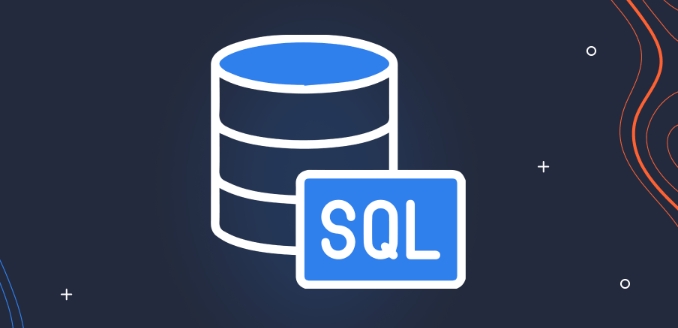Database version control is implemented through migration scripts to ensure that structural changes are traceable and rollable. 1. Why is it necessary: database structure changes are difficult to roll back, which can easily lead to inconsistency in the environment. Version control can record the change history and support restoration; 2. How to implement: Use migration scripts executed in sequence, record them in the schema_migrations table, combined with tools such as ActiveRecord Migrations or golang-migrate; 3. Notes: The script should be idempotent and include rollback logic, distinguish structure and data changes, and use scripts to synchronize the test environment uniformly; 4. Other suggestions: Regular backup of DDL, CI/CD to automatically perform migration, and check structural consistency before going online.

Managing versioning of SQL databases sounds like a "should be done but always ignored" thing in the development process. Actually it is not complicated, but it is indeed prone to errors. Especially in the scenario where multiple people collaborate and frequently launch changes, the database structure without version control is like changing a light bulb in the dark, and accidentally breaking the short.

Let’s talk about how to do this right from a few key points.
Why does the database structure also require version control?
Changes to the database structure, such as adding fields, modifying indexes, disassemblying tables, and merging tables, are not as easy to "roll back" as code. Once an error occurs online, it is much more complicated to recover than the code. Moreover, the structural inconsistency between development, testing, pre-release and production environments is easy to lay mines.

The role of version control is to make every change traceable and playbackable. Just like Git to code, it lets you know "who changed what when" and safely restore it when needed.
How to establish version control for database structure?
A common practice is to use Migration Scripts to record every structural change. These scripts are executed in order and recorded in a table in the database, such as schema_migrations , which contains the version number and execution time.

For example:
- 001_create_users_table.sql
- 002_add_email_to_users.sql
- 003_create_orders_table.sql
Before each time, the system will check the current database version and then run those scripts that have not been executed. This ensures that the structure is consistent between the environments and can also conveniently back the version.
In terms of tools, you can select models based on the technology stack, such as:
- Rails has ActiveRecord Migrations
- Django has built-in migrations module
- Go can use golang-migrate
- Node.js can be used with TypeORM or db-migrate
Of course, you can also write a simple script to manage these changes yourself, as long as the logic is clear.
What details should be paid attention to in practice?
-
The script should be idempotent or repeatable
Sometimes the script may fail to execute or need to be executed repeatedly. For example, it is best to determine whether the field exists before adding a field to avoid repeated errors.ALTER TABLE users ADD COLUMN IF NOT EXISTS email VARCHAR(255);
Don't skip the rollback script
Once there is a problem online, you have to be able to roll back quickly. Therefore, it is best to write a "reverse" script at the same time for each change, such as deleting fields, restoring indexes, etc.Structural changes and data migration should be distinguished
Some changes not only change the structure, but also update the data. This type of operation should be especially careful, and it is best to perform during off-peak periods to avoid table locking or affecting performance.The test environment also needs to use migration scripts to synchronize the structure
Do not manually modify the test library structure, as it will easily be inconsistent with the production environment. Only by using migration scripts to ensure that the test is effective.
What else should you pay attention to in addition to version control?
In addition to version control of structural changes, you can also improve the reliability of database management by following practices:
- Regularly backup database structures (such as exporting DDL)
- Use CI/CD to automatically execute migration scripts to avoid human misses
- Check the structure change before going online (such as whether the field type is correct and whether the index is missing)
These details add up to make database changes more controllable and easier to troubleshoot problems.
Basically that's it. Database version control is not complicated, but is easily overlooked. As long as you record each change clearly and cooperate with appropriate tools, many online accidents can be avoided.
The above is the detailed content of Version Control for SQL Database Schemas. For more information, please follow other related articles on the PHP Chinese website!

Hot AI Tools

Undress AI Tool
Undress images for free

Undresser.AI Undress
AI-powered app for creating realistic nude photos

AI Clothes Remover
Online AI tool for removing clothes from photos.

Clothoff.io
AI clothes remover

Video Face Swap
Swap faces in any video effortlessly with our completely free AI face swap tool!

Hot Article

Hot Tools

Notepad++7.3.1
Easy-to-use and free code editor

SublimeText3 Chinese version
Chinese version, very easy to use

Zend Studio 13.0.1
Powerful PHP integrated development environment

Dreamweaver CS6
Visual web development tools

SublimeText3 Mac version
God-level code editing software (SublimeText3)
 Defining Database Schemas with SQL CREATE TABLE Statements
Jul 05, 2025 am 01:55 AM
Defining Database Schemas with SQL CREATE TABLE Statements
Jul 05, 2025 am 01:55 AM
In database design, use the CREATETABLE statement to define table structures and constraints to ensure data integrity. 1. Each table needs to specify the field, data type and primary key, such as user_idINTPRIMARYKEY; 2. Add NOTNULL, UNIQUE, DEFAULT and other constraints to improve data consistency, such as emailVARCHAR(255)NOTNULLUNIQUE; 3. Use FOREIGNKEY to establish the relationship between tables, such as orders table references the primary key of the users table through user_id.
 Key Differences Between SQL Functions and Stored Procedures.
Jul 05, 2025 am 01:38 AM
Key Differences Between SQL Functions and Stored Procedures.
Jul 05, 2025 am 01:38 AM
SQLfunctionsandstoredproceduresdifferinpurpose,returnbehavior,callingcontext,andsecurity.1.Functionsreturnasinglevalueortableandareusedforcomputationswithinqueries,whileproceduresperformcomplexoperationsanddatamodifications.2.Functionsmustreturnavalu
 Using SQL LAG and LEAD functions for time-series analysis.
Jul 05, 2025 am 01:34 AM
Using SQL LAG and LEAD functions for time-series analysis.
Jul 05, 2025 am 01:34 AM
LAG and LEAD in SQL are window functions used to compare the current row with the previous row data. 1. LAG (column, offset, default) is used to obtain the data of the offset line before the current line. The default value is 1. If there is no previous line, the default is returned; 2. LEAD (column, offset, default) is used to obtain the subsequent line. They are often used in time series analysis, such as calculating sales changes, user behavior intervals, etc. For example, obtain the sales of the previous day through LAG (sales, 1, 0) and calculate the difference and growth rate; obtain the next visit time through LEAD (visit_date) and calculate the number of days between them in combination with DATEDIFF;
 How to find columns with a specific name in a SQL database?
Jul 07, 2025 am 02:08 AM
How to find columns with a specific name in a SQL database?
Jul 07, 2025 am 02:08 AM
To find columns with specific names in SQL databases, it can be achieved through system information schema or the database comes with its own metadata table. 1. Use INFORMATION_SCHEMA.COLUMNS query is suitable for most SQL databases, such as MySQL, PostgreSQL and SQLServer, and matches through SELECTTABLE_NAME, COLUMN_NAME and combined with WHERECOLUMN_NAMELIKE or =; 2. Specific databases can query system tables or views, such as SQLServer uses sys.columns to combine sys.tables for JOIN query, PostgreSQL can be used through inf
 How to create a user and grant permissions in SQL
Jul 05, 2025 am 01:51 AM
How to create a user and grant permissions in SQL
Jul 05, 2025 am 01:51 AM
Create a user using the CREATEUSER command, for example, MySQL: CREATEUSER'new_user'@'host'IDENTIFIEDBY'password'; PostgreSQL: CREATEUSERnew_userWITHPASSWORD'password'; 2. Grant permission to use the GRANT command, such as GRANTSELECTONdatabase_name.TO'new_user'@'host'; 3. Revoke permission to use the REVOKE command, such as REVOKEDELETEONdatabase_name.FROM'new_user
 What is the SQL LIKE Operator and How Do I Use It Effectively?
Jul 05, 2025 am 01:18 AM
What is the SQL LIKE Operator and How Do I Use It Effectively?
Jul 05, 2025 am 01:18 AM
TheSQLLIKEoperatorisusedforpatternmatchinginSQLqueries,allowingsearchesforspecifiedpatternsincolumns.Ituseswildcardslike'%'forzeroormorecharactersand'_'forasinglecharacter.Here'showtouseiteffectively:1)UseLIKEwithwildcardstofindpatterns,e.g.,'J%'forn
 How to backup and restore a SQL database
Jul 06, 2025 am 01:04 AM
How to backup and restore a SQL database
Jul 06, 2025 am 01:04 AM
Backing up and restoring SQL databases is a key operation to prevent data loss and system failure. 1. Use SSMS to visually back up the database, select complete and differential backup types and set a secure path; 2. Use T-SQL commands to achieve flexible backups, supporting automation and remote execution; 3. Recovering the database can be completed through SSMS or RESTOREDATABASE commands, and use WITHREPLACE and SINGLE_USER modes if necessary; 4. Pay attention to permission configuration, path access, avoid overwriting the production environment and verifying backup integrity. Mastering these methods can effectively ensure data security and business continuity.
 Explain the Distinction Between a SQL Schema and a Database.
Jul 05, 2025 am 01:31 AM
Explain the Distinction Between a SQL Schema and a Database.
Jul 05, 2025 am 01:31 AM
OK, please provide the article content that needs a summary.






